Global methane levels on the rise again
After eight years of near-zero growth in atmospheric methane concentrations, levels have again started to rise. This is bad news for future global warming, says CSIRO’s Dr Paul Fraser, who co-authored a paper to be published in Geophysical Research Letters, a journal of the American Geophysical Union.
Over recent years, the growth of important greenhouse gases, namely methane and the CFCs, had slowed. This tended to offset the increasing growth rate of carbon dioxide that results mainly from large increases in the consumption of fossil fuels, particularly in the developing world. But now that methane levels have resumed their growth, global warming may accelerate.
Methane is the second most important greenhouse gas in the atmosphere after carbon dioxide, accounting for nearly 20 per cent of global warming since the industrial revolution. Methane is emitted to the atmosphere from natural wetlands, rice fields, cattle, forest and grassland fires, coal mines, natural gas leakage and use, and other sources.
Over the past decade these methane sources have been close to balancing the absorption of methane through atmospheric oxidation and into dry soil, Dr Fraser says. This fragile balance has resulted in little growth of methane in the atmosphere. Apparently some sources have been increasing, such as from fossil fuel use, cattle, and rice, while others have been decreasing, particularly natural tropical wetlands. However, over the past year, the total sources have overwhelmed the total sinks, and methane has again started to rise.
Dr Fraser says that recent analyses of global data by CSIRO and collaborators at the Massachusetts Institute of Technology, Scripps Institution of Oceanography and the University of Bristol suggest that the methane increase is, at least in part, due to methane releases in the high latitudes of the Northern Hemisphere.
One surprising feature of this recent growth is that it occurred almost simultaneously at all measurement locations across the globe. However, the majority of methane emissions are in the Northern Hemisphere, and it takes more than one year for gases to be mixed from the Northern Hemisphere to the Southern Hemisphere. Hence, theoretical analysis of the measurements shows that if an increase in emissions is solely responsible, these emissions must have risen by a similar amount in both hemispheres at the same time.
A rise in Northern Hemispheric emissions may be due to the very warm conditions that were observed over Siberia throughout 2007, potentially leading to increased bacterial emissions from wetland areas. However, a potential cause for an increase in Southern Hemispheric emissions is less clear.
An alternative explanation for the rise may lie, at least in part, with a drop in the concentrations of the methane-destroying OH. Theoretical studies show that if this has happened, the required global methane emissions rise would have been smaller, and more strongly biased to the Northern Hemisphere. At present, however, it is uncertain whether such a drop in hydroxyl free radical concentrations did occur because of the inherent uncertainty in the current method for estimating global OH levels:
 energy :: sustainability :: biomass :: bioenergy :: land use :: wetlands :: emissions :: methane :: climate change :: atmosphere ::
energy :: sustainability :: biomass :: bioenergy :: land use :: wetlands :: emissions :: methane :: climate change :: atmosphere ::
To help pin down the cause of the methane increase, Ronald Prinn - TEPCO Professor of Atmospheric Chemistry, in MIT's Department of Earth, Atmospheric and Planetary Science - said, "the next step will be to study this using a very high-resolution atmospheric circulation model and additional measurements from other networks." But doing that could take another year, he said, and because the detection of increased methane has important consequences for global warming the team wanted to get these initial results out as quickly as possible.
"The key thing is to better determine the relative roles of increased methane emission versus an idecrease in the rate of removal," Prinn said. "Apparently we have a mix of the two, but we want to know how much of each" is responsible for the overall increase.
It is too early to tell whether this increase represents a return to sustained methane growth, or the beginning of a relatively short-lived anomaly, according to Rigby and Prinn. Given that, pound for pound, methane is 25 times more powerful as a greenhouse gas than carbon dioxide, the situation will require careful monitoring in the near future.
The Intergovernmental Panel on Climate Change (IPCC) has identified the need to understand causes of the variations of methane growth rates as a priority area of research. The reality is that scientists have only a very basic understanding of these methane variations, Dr Fraser says.
In order to predict the future contribution of methane to climate change, continuing high-quality observations, in particular in tropical and boreal locations, are required as input to, and verification of, sophisticated climate models.
References:
M. Rigby, R. Prinn, P. Fraser, P. Simmonds, R. Langenfelds, J. Huang, D. Cunnold, P. Steele, P. Krummel, R.Weiss, S. O’Doherty, P. Salameh, H. Wang, C. Harth, J. Mühle, L. Porter. "Renewed growth of atmospheric methane", Journal of Geophysical Research. 28 pages 2008
Article continues
Over recent years, the growth of important greenhouse gases, namely methane and the CFCs, had slowed. This tended to offset the increasing growth rate of carbon dioxide that results mainly from large increases in the consumption of fossil fuels, particularly in the developing world. But now that methane levels have resumed their growth, global warming may accelerate.
Methane is the second most important greenhouse gas in the atmosphere after carbon dioxide, accounting for nearly 20 per cent of global warming since the industrial revolution. Methane is emitted to the atmosphere from natural wetlands, rice fields, cattle, forest and grassland fires, coal mines, natural gas leakage and use, and other sources.
Over the past decade these methane sources have been close to balancing the absorption of methane through atmospheric oxidation and into dry soil, Dr Fraser says. This fragile balance has resulted in little growth of methane in the atmosphere. Apparently some sources have been increasing, such as from fossil fuel use, cattle, and rice, while others have been decreasing, particularly natural tropical wetlands. However, over the past year, the total sources have overwhelmed the total sinks, and methane has again started to rise.
Dr Fraser says that recent analyses of global data by CSIRO and collaborators at the Massachusetts Institute of Technology, Scripps Institution of Oceanography and the University of Bristol suggest that the methane increase is, at least in part, due to methane releases in the high latitudes of the Northern Hemisphere.
One surprising feature of this recent growth is that it occurred almost simultaneously at all measurement locations across the globe. However, the majority of methane emissions are in the Northern Hemisphere, and it takes more than one year for gases to be mixed from the Northern Hemisphere to the Southern Hemisphere. Hence, theoretical analysis of the measurements shows that if an increase in emissions is solely responsible, these emissions must have risen by a similar amount in both hemispheres at the same time.
A rise in Northern Hemispheric emissions may be due to the very warm conditions that were observed over Siberia throughout 2007, potentially leading to increased bacterial emissions from wetland areas. However, a potential cause for an increase in Southern Hemispheric emissions is less clear.
An alternative explanation for the rise may lie, at least in part, with a drop in the concentrations of the methane-destroying OH. Theoretical studies show that if this has happened, the required global methane emissions rise would have been smaller, and more strongly biased to the Northern Hemisphere. At present, however, it is uncertain whether such a drop in hydroxyl free radical concentrations did occur because of the inherent uncertainty in the current method for estimating global OH levels:
 energy :: sustainability :: biomass :: bioenergy :: land use :: wetlands :: emissions :: methane :: climate change :: atmosphere ::
energy :: sustainability :: biomass :: bioenergy :: land use :: wetlands :: emissions :: methane :: climate change :: atmosphere :: To help pin down the cause of the methane increase, Ronald Prinn - TEPCO Professor of Atmospheric Chemistry, in MIT's Department of Earth, Atmospheric and Planetary Science - said, "the next step will be to study this using a very high-resolution atmospheric circulation model and additional measurements from other networks." But doing that could take another year, he said, and because the detection of increased methane has important consequences for global warming the team wanted to get these initial results out as quickly as possible.
"The key thing is to better determine the relative roles of increased methane emission versus an idecrease in the rate of removal," Prinn said. "Apparently we have a mix of the two, but we want to know how much of each" is responsible for the overall increase.
It is too early to tell whether this increase represents a return to sustained methane growth, or the beginning of a relatively short-lived anomaly, according to Rigby and Prinn. Given that, pound for pound, methane is 25 times more powerful as a greenhouse gas than carbon dioxide, the situation will require careful monitoring in the near future.
The Intergovernmental Panel on Climate Change (IPCC) has identified the need to understand causes of the variations of methane growth rates as a priority area of research. The reality is that scientists have only a very basic understanding of these methane variations, Dr Fraser says.
In order to predict the future contribution of methane to climate change, continuing high-quality observations, in particular in tropical and boreal locations, are required as input to, and verification of, sophisticated climate models.
References:
M. Rigby, R. Prinn, P. Fraser, P. Simmonds, R. Langenfelds, J. Huang, D. Cunnold, P. Steele, P. Krummel, R.Weiss, S. O’Doherty, P. Salameh, H. Wang, C. Harth, J. Mühle, L. Porter. "Renewed growth of atmospheric methane", Journal of Geophysical Research. 28 pages 2008
Article continues
 --------------
--------------
 Mongabay, a leading resource for news and perspectives on environmental and conservation issues related to the tropics, has launched Tropical Conservation Science - a new, open access academic e-journal. It will cover a wide variety of scientific and social studies on tropical ecosystems, their biodiversity and the threats posed to them.
Mongabay, a leading resource for news and perspectives on environmental and conservation issues related to the tropics, has launched Tropical Conservation Science - a new, open access academic e-journal. It will cover a wide variety of scientific and social studies on tropical ecosystems, their biodiversity and the threats posed to them.


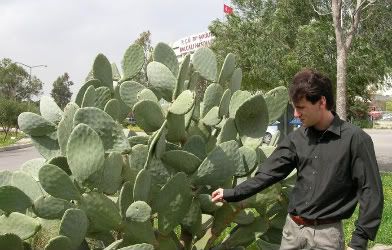


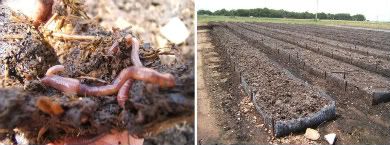
 .
.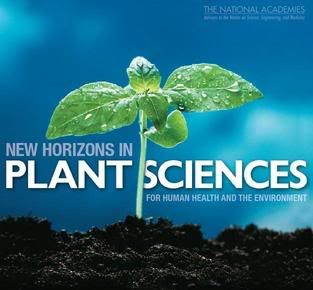
 Earthworms can change the chemical nature of the carbon in North American forest litter and soils, potentially affecting the amount of carbon stored in forests, according to Purdue University researchers.
Earthworms can change the chemical nature of the carbon in North American forest litter and soils, potentially affecting the amount of carbon stored in forests, according to Purdue University researchers.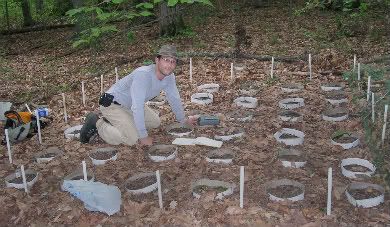
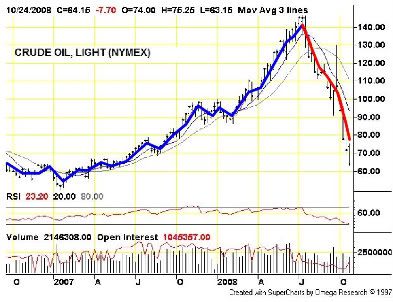
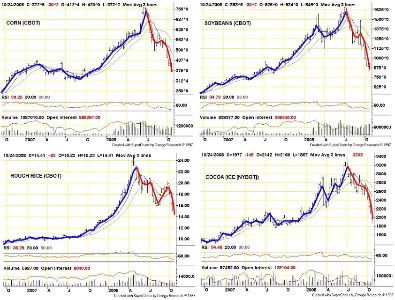
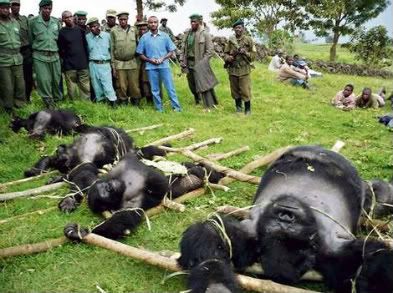







Saturday, November 01, 2008
UN: 1 million flee Congo violence
Political tensions between Congo and Rwanda are growing. There are signs that both camps are scrambling their allies to prepare for war.
Obviously, no matter how hard we and many others try to help Central Africa's rural populations combat poverty, all these efforts will have been in vain if war breaks out again. Likewise, all conservation efforts - be they related to forest or wildlife protection - will have been futile, as war ravages entire ecosystems (the first Congo wars have led to an ecological disaster of unprecedented proportions in Congo).
So please help in keeping this crisis on the top of the agenda of the international media and of those who can make a difference.
Write to any of the following people in power and urge them to intervene, either on the front of diplomacy or militarily, if you think that's wise. France, Belgium and other EU member states want to send troops to stabilize the situation and to strengthen the U.N. Peacekeeping force MONUC.
European Union
Mr Louis Michel
European Commissioner for development and humanitarian aid
[email protected]
Mr Javier Solana
Secretary-General and High Representative for common foreign and security policy, European Council
Via his spokesperson Cristina GALLACH
[email protected]
Mr Bernard Kouchner
Minister of Foreign Affairs of France (Currently holding the EU Presidency)
https://pastel.diplomatie.gouv.fr/bacou/default.asp?lang=gb
U.N. Security Council
Mr Jan K.F. Grauls, Ambassador Extraordinary and Plenipotentiary for Belgium
[email protected]
African Union
H.E. Dr. Jean PING
Chairperson of the African Union
[email protected]
H.E. Mr. Ramtane Lamamra
Commissioner for Peace and Security
[email protected]
Mrs. Julia Dolly Joiner
Commissioner for Political Affairs
[email protected]
United Nations news focus on the situation in the Democratic Republic of Congo.
Article continues
posted by Biopact team at 3:50 AM 0 comments links to this post
